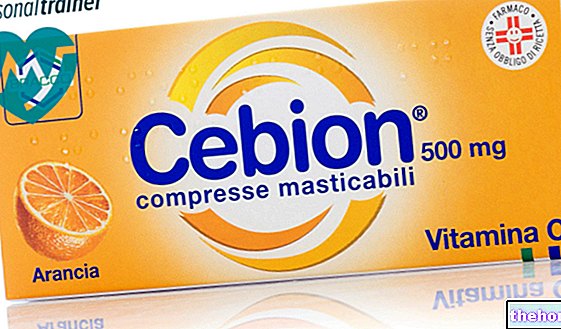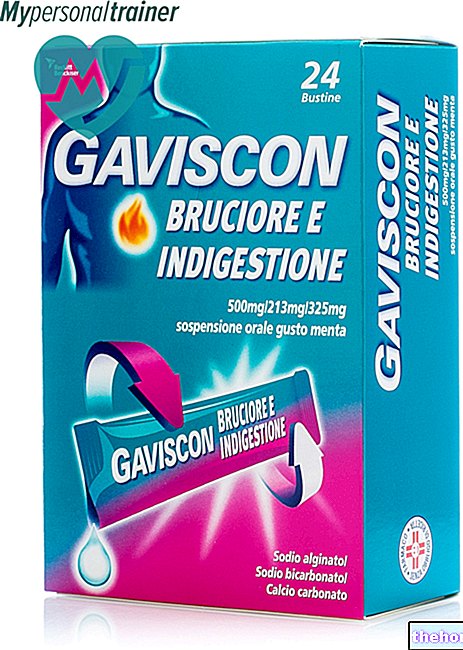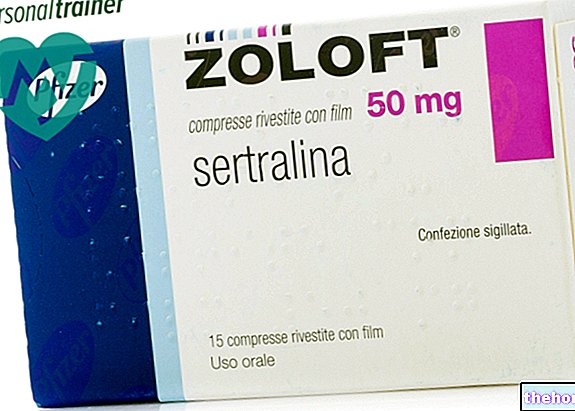Active ingredients: Gabesate mesylate
FOY 100 mg powder and solvent for solution for infusion
Indications Why is Foy used? What is it for?
PHARMACOTHERAPEUTIC CATEGORY
Gabesate mesilate belongs to the category of SERPINs, ie serine protease inhibitors, substances produced in various parts of the body. It is a synthetic drug (of a non-protein nature) and low molecular weight, with a high inhibitory effect against kallikrein, trypsin , as well as a powerful relaxing action on the sphincter of Oddi.
Due to these characteristics, the product has a positive effect in resolving the symptoms and correcting the pathogenetic mechanisms of acute pancreatitis associated with the exaggerated or uncontrolled release of proteolytic enzymes.
THERAPEUTIC INDICATIONS
Acute pancreatitis.
Contraindications When Foy should not be used
Hypersensitivity to gabesate mesylate
Precautions for use What you need to know before you take Foy
The product can have an anticoagulant action.
In some studies conducted in dogs at high doses, a reduction in partial thromboplastin time was observed.
This event has not so far been observed during Foy therapy in humans.
The administration of this product in high doses can cause necrotic ulcers at the injection site and along the blood vessels where it can damage the vascular wall causing phlebitis and stiffening of the vessel itself.
Patients must be monitored carefully.
If pain, redness or inflammation occurs at the injection site, treatment should be stopped, or the injection site changed, and appropriate measures taken.
During administration the patient must be constantly monitored.
Shock, anaphylactic shock, anaphylactoid reactions can occur.
In the event of a fall in blood pressure, precordial tightness, dyspnoea, loss of consciousness, pharyngeal / laryngeal edema, itching or malaise, treatment should be stopped immediately and appropriate measures taken.
Patients should also be closely monitored for the possible occurrence of: agranulocytosis, leukopenia, thrombocytopenia and hyperkalaemia.
If abnormal values are found, treatment should be stopped and, in the case of hyperkalaemia, appropriate measures should be taken.
If: headache, reduced partial thromboplastin time, bleeding tendency, hypotension, nausea, vomiting, diarrhea, rash, itching or facial congestion occur, the dosage should be reduced. In case of persistence, permanently suspend the treatment.
Interactions Which drugs or foods can modify the effect of Foy
There are no known drug interactions.
Tell your doctor or pharmacist if you have recently taken any other medicines, even those without a prescription.
Warnings It is important to know that:
Use if pregnant or breastfeeding
. In the event of an established or presumed pregnancy, it is advisable to keep the dosage of Foy at the minimum effective levels and only for indications that imply life-threatening for the pregnant woman.
On the other hand, no data are available on the possible excretion in breast milk.
Dosage and method of use How to use Foy: Dosage
Start the treatment with 1-3 vials per day (100-300 mg of gabesate mesylate) by intravenous drip infusion at a rate not exceeding 8 ml / minute and subsequently reduce the dosage in relation to the improvement of the clinical picture. If necessary, it is possible to increase the dosage indicated above by 1-3 vials in the same day.
Introduce the special solvent in the vial containing Foy powder. The solution thus obtained must be further diluted in 500 ml of Ringer's solution or 5% glucose.
The solution thus prepared must be used immediately or stored in the refrigerator (at 3 ° C), where it remains stable for about 5 days.
It is advisable to administer the solution by i.v. slow, adjusting the speed so as not to exceed 2.5 mg of gabesate mesylate per kg of body weight and per hour.
In case of concomitant therapy with other parenteral drugs, gabesate mesylate must be administered separately.
The posology must be suitably adapted according to the patient's symptoms.
Use in the elderly: Following a reduction in physiological functions, constant monitoring and precautions such as dose reduction are recommended in the elderly.
Overdose What to do if you have taken too much Foy
There are no known symptoms of overdose.
Side Effects What are the side effects of Foy
From a clinical study, conducted on about 4000 patients treated with Foy, various adverse reactions emerged; the main ones are shown in the table below, divided by system and frequency:
Compliance with the instructions contained in the package leaflet reduces the risk of undesirable effects.
It is important to inform the doctor or pharmacist of any undesirable effect, even if not described in the package leaflet.
Expiry and Retention
Expiry: see the expiry date indicated on the package.
The expiry date indicated refers to the product in intact packaging, correctly stored.
WARNING: do not use the medicine after the expiry date indicated on the package.
Medicines should not be disposed of via wastewater or household waste. Ask your pharmacist how to throw away medicines you no longer use. This will help protect the environment.
Keep this medicine out of the reach and sight of children.
COMPOSITION
One vial of powder contains: Active ingredient: Gabesate mesylate 100 mg. One ampoule of solvent contains: Water for injections.
PHARMACEUTICAL FORM AND CONTENT
Powder and solvent for solution for infusion. "100 mg powder and solvent for solution for infusion" 1 vial + 1 solvent ampoule 5 ml
Source Package Leaflet: AIFA (Italian Medicines Agency). Content published in January 2016. The information present may not be up-to-date.
To have access to the most up-to-date version, it is advisable to access the AIFA (Italian Medicines Agency) website. Disclaimer and useful information.
01.0 NAME OF THE MEDICINAL PRODUCT
FOY 100 MG POWDER AND SOLVENT FOR SOLUTION FOR INFUSION
02.0 QUALITATIVE AND QUANTITATIVE COMPOSITION
One vial of powder contains 100 mg of gabesate mesylate
For the full list of excipients, see section 6.1.
03.0 PHARMACEUTICAL FORM
Powder and solvent for solution for infusion
04.0 CLINICAL INFORMATION
04.1 Therapeutic indications
Acute pancreatitis.
04.2 Posology and method of administration
Start the treatment with 1-3 vials per day (100-300 mg of gabesate mesylate) by intravenous drip infusion at a rate not exceeding 8 ml / minute and subsequently reduce the dosage in relation to the improvement of the clinical picture. If necessary, it is possible to increase the dosage indicated above by 1-3 vials in the same day.
Introduce the special solvent in the vial containing Foy powder. The solution thus obtained must be further diluted in 500 ml of Ringer's solution or 5% glucose.
The solution thus prepared must be used immediately or stored in the refrigerator (at 3 ° C), where it remains stable for about 5 days.
It is advisable to administer the solution by i.v. slow, adjusting the speed so as not to exceed 2.5 mg of gabesate mesylate per kg of body weight and per hour.
The posology must be suitably adapted according to the patient's symptoms.
Use in the elderly:
Following a reduction in physiological functions, constant monitoring and precautions such as dose reduction are recommended in the elderly.
04.3 Contraindications
Hypersensitivity to gabesate mesylate.
04.4 Special warnings and appropriate precautions for use
The product can have an anticoagulant action.
In some studies conducted in dogs at high doses, a reduction in partial thromboplastin time was observed.
This event has not so far been observed during Foy therapy in humans.
During administration of the product (see also par. 4.2) it is advisable to adjust the infusion rate so as not to exceed 2.5 mg / kg per hour. In case of concomitant therapy with other parenteral drugs, it is necessary to administer the gabesate mesylate separately.
The administration of this product in high doses can cause necrotic ulcers at the injection site and along the blood vessels where it can damage the vascular wall causing phlebitis and stiffening of the vessel itself.
Patients must be monitored carefully.
If pain, redness or inflammation occurs at the injection site, treatment should be stopped, or the injection site changed, and appropriate measures taken.
During administration the patient must be constantly monitored. Shock, anaphylactic shock, anaphylactoid reactions can occur.
In the event of a fall in blood pressure, precordial tightness, dyspnoea, loss of consciousness, pharyngeal / laryngeal edema, itching or malaise, treatment should be stopped immediately and appropriate measures taken.
Patients should also be closely monitored for the possible occurrence of: agranulocytosis, leukopenia, thrombocytopenia and hyperkalaemia.
If abnormal values are found, treatment should be stopped and, in the case of hyperkalaemia, appropriate measures should be taken.
If: headache, reduced partial thromboplastin time, bleeding tendency, hypotension, nausea, vomiting, diarrhea, rash, itching or facial congestion occur, the dosage should be reduced. In case of persistence, permanently suspend the treatment.
04.5 Interactions with other medicinal products and other forms of interaction
Not known.
04.6 Pregnancy and lactation
Pregnancy
During an established or presumed pregnancy it is advisable to keep the dosage of Foy at the minimum effective levels (a loss of weight of the fetuses was observed in mice with doses of 100 mg / kg / day) and only for indications that imply life-threatening the pregnant woman.
Feeding time
No data are available on possible excretion in breast milk.
04.7 Effects on ability to drive and use machines
Not relevant as Foy is only given in a hospital setting.
04.8 Undesirable effects
From a clinical study, conducted on about 4000 patients treated with Foy, various adverse reactions emerged; the main ones are shown in the table below, divided by system and frequency:
Reporting of suspected adverse reactions.
Reporting of suspected adverse reactions occurring after authorization of the medicinal product is important as it allows continuous monitoring of the benefit / risk balance of the medicinal product. Healthcare professionals are asked to report any suspected adverse reactions via the national reporting system. "address https://www.aifa.gov.it/content/segnalazioni-reazioni-avverse.
04.9 Overdose
There are no known symptoms of overdose.
05.0 PHARMACOLOGICAL PROPERTIES
05.1 Pharmacodynamic properties
Pharmacotherapeutic group: Antihemorrhagics, antifibrinolytics, protease inhibitors
- ATC code: B02AB
Gabesate mesylate (GM) has been shown to be particularly active as an inhibitor of trypsin, phospholipase A, plasmin, kallikrein and thrombin (even in the absence of AT III), favorably interfering with pancreatic hyperproteasemia, fibrinolysis, coagulation and quinine. GM exhibits antiplatelet properties, exerts a protective effect on experimentally induced acute pancreatitis in rats and rabbits, an inhibitory effect on induced DIC in rabbits, rats and dogs, a protective action in various types of shock. Furthermore, in the dog, an evident releasing action of the sphincter of Oddi could be demonstrated.
05.2 "Pharmacokinetic properties
The half-life of GM is about 60 seconds. Administered iv in healthy male subjects at the rate of 2 mg / kg / h it reaches the maximum concentration in 5-10 minutes from the start of administration with a blood level of principle unmetabolized active equal to 109 ng / ml. At the dose of 4 mg / kg / h the blood level of the non-metabolised product is equal to 265 ng / ml.
Following intravenous administration it is rapidly metabolised to guanidinocaproic acid and parabenzoate (both inactive). Elimination occurs over 24 hours mainly in the urine, with minimal biliary excretion.
05.3 Preclinical safety data
Acute toxicity studies have shown LD50 values (mg / kg) ranging from 8000 to 260 mg / kg and from 7770 to 81 mg / kg in mice and rats, respectively if administered orally or intravenously.
GM is satisfactorily tolerated for repeated administration in different animal species.
In the rat, the dose of 40 mg / 5ml / kg showed mortality in the proportion 4/10 / sex, stiffness of the extremities, inhibition of breathing, reduction of hemoglobin, hematocrit and prothrombin time. In rabbits, treatment for 6 months, at doses of 10, 20, 40, 80 and 160 mg / kg / day administered intravenously, produced no effect, except for a slight local irritation at the inoculation sites. In dogs, treatment with 40 mg / kg / day for 14 days resulted in a significant reduction in partial thromboplastin time, increased liver weight with mild dropsy degeneration. The dose of 640 mg / kg / day also caused a decrease in hematocrit and platelets and an increase in alkaline phosphatase and alanine aminotransferase.
Fetal toxicity data demonstrated that non-toxic doses in mothers and the product of conception are 50 mg / kg, 20 mg / kg and 10 mg / kg in mice, rats and rabbits, respectively. The product does not cause effects on fertility and reproductive capacity at maximum doses between 12 and 36 mg / kg.
Furthermore, the compound does not produce mutagenic effects, as shown by studies conducted on different genetic systems.
06.0 PHARMACEUTICAL INFORMATION
06.1 Excipients
Solvent ampoule: water for injections
06.2 Incompatibility
In case of concomitant therapy with other parenteral drugs, it is necessary to administer the gabesate mesylate separately.
06.3 Period of validity
3 years.
The reconstituted solution, prepared by adding the contents of the corresponding solvent vial to a vial, is stable for a period of 24 hours at room temperature and for 5 days in the refrigerator (3 ° C).
06.4 Special precautions for storage
None
06.5 Nature of the immediate packaging and contents of the package
Powder vial
Type I, colorless, neutral glass vial with butyl rubber stopper and "Flip-off" type aluminum / plastic cap.
Solvent vial
Type I neutral glass vial, colorless.
"100 mg powder and solvent for solution for infusion" 1 vial + 1 solvent ampoule 5 ml
06.6 Instructions for use and handling
See section 4.2.
07.0 MARKETING AUTHORIZATION HOLDER
Sanofi S.p.A. - Viale L. Bodio, 37 / B - Milan
08.0 MARKETING AUTHORIZATION NUMBER
A.I.C. n. 026829010 - "100 mg powder and solvent for solution for infusion" 1 vial + 1 solvent ampoule 5 ml
09.0 DATE OF FIRST AUTHORIZATION OR RENEWAL OF THE AUTHORIZATION
Date of first authorization: 28.04.1993
Date of the most recent renewal: 19.05.2008























-nelle-carni-di-maiale.jpg)




